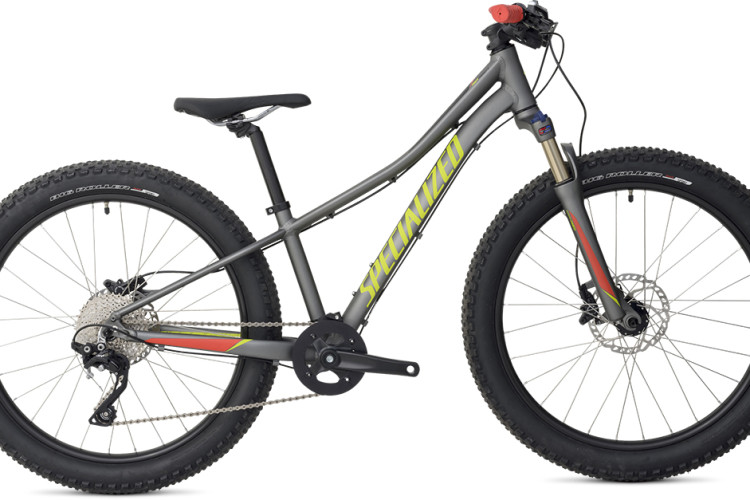According to the National Institute of Mental Health (NIMH) and Centers for Disease Control and Prevention (CDC), attention-deficit/hyperactivity disorder (ADHD) affects people of all ages worldwide and is one of the leading disorders diagnosed in childhood. The characteristic behaviors of ADHD include varying grades of inattention, hyperactivity, and impulsivity. While these behaviors may seem normal for any school-age child, in diagnosed ADHD they usually present to a degree that somehow impairs cognitive, emotional, social, and/or physical function. The average age onset of ADHD is 7 years old, affecting about 11% of American adolescents with boys being 3-4 times more prone than girls. While it remains unclear what causes ADHD, perhaps more troubling is the inability to explain why the number of school-age children diagnosed with this disorder is climbing. The rate of ADHD diagnosis increased from about 3% per year from 1997 to 2006 to 5% per year between 2003 and 2011.
Treatment for ADHD focuses on the management of symptoms, and most guidelines suggest a combination of medication, psychotherapy, and social skills training. Suprisingly, drugs that stimulate the brain such as methylphenidate and amphetamine (Ritalin and Adderall, respectively) are the most commonly-prescribed pharmaceutical agents used to attenuate behaviors associated with ADHD. While drug treatment has been shown to be up to 80% efficacious in children with ADHD, there is some controversy regarding the benefits of pharmaceutical intervention beyond just two years of using any current ADHD agents. These stimulants are also not without drawbacks, such as the relatively high cost, routine management of dosage, and side effects including but not limited to: decreased appetite, insomnia, headaches, heart palpitations, and tics.

Emerging research applying physical exercise as an alternative treatment for ADHD has consistently produced positive results. According to Acta Paediatrica, a handful of focused, peer-reviewed studies within the last 10 years have found that several different exercise designs can improve cognition, enhance motor and social skills, and attenuate impulsive behavior in children with ADHD. In a 2010 study, the Journal of Sports and Exercise Psychology observed walks in the park to be as potent as two doses of medication with respect to enhancing concentration. Not only does it ameliorate specific symptoms of ADHD, but exercise staves off obesity which, as reported by the American Physical Therapy Association, is more prevalent among people with attention disorders. Despite this growing body of evidence, further research is warranted to clarify the type, intensity, and frequency of exercise required to positively impact impairments caused by ADHD. And who better to lead the way than one of cycling’s industry leaders: Specialized.
In 2012, Specialized Bikes and RTSG Neuroscience spent five days a week for a month measuring the effects of cycling in two groups of Massachusetts middle school-age children who were either diagnosed with or displayed ADHD-like symptoms. Outcomes identified were cognitive, emotional, social, and physical status before, during, and after the program, and researchers concluded that cycling…
- enhances processing of information
- improves attention and attenuates impulsivity
- enables children to better understand their feelings
- improves kids’ mood
- decreases BMI and waist circumference
- accelerates cognitive performance even after just one ride
- is addictive! The program retained 87% of subjects initially enrolled.

To be fair, research funded by an industry standing to gain from its findings presents a conflict of interest and, therefore, becomes a limitation to the study itself. But in 2011, the pharmaceutical industry alone spent $39 billion for research in the U.S., which was $8 billion more than than the National Institute of Medicine. How’s that for conflict of interest?
While the source of funding (not growing on trees) will invariably be weighed against the validity of results, isn’t it about time the money come from somewhere else, providing a potential cure free of side effects and at the fraction of the price Big Pharm can offer?
Beyond the argument for what constitutes valid research or questioning vested interests is the story of Specialized CEO Mike Sinyard’s own life-long dealings with ADHD. Sinyard says his symptoms would subside after riding his bike, and he noticed a similar pattern with his son who also suffers from ADHD. After being further inspired by a Bicycling Magazine article entitled “Riding Is My Ritalin,” he decided to further explore the connection between bike and brain.
Furthermore, researchers involved in the early Massachusetts findings have reason to believe there may be an advantage to how cycling-specific exercises impact the power of the brain. According to Sports Psyhcology expert Dr. Lindsay Shaw Thorton:
“The findings also indicated there may be factors more unique to cycling that make it especially effective when it comes to the brain benefits of exercise. Factors like maintaining balance, being outdoors, riding in groups, and the rhythmic motion of pedaling we theorize may have contributed to our findings being so profound”

Imagine a world where pediatricians prescribe Rockhoppers instead of Ritalin, or the day you purchase your dream bike with a health savings account. Pumptracks will take the place of walk-in clinics, and Strava will upload to your medical chart–where a “Personal Best” qualifies you for discounts on upgrades. Too dramatic? Maybe so, but it does fall in line with Sinyard’s hope that, at the very least, cycling will be taken seriously enough to become “…a compliment to, and perhaps even a substitute for, medication.”
Is it just too simple to consider cycling (and any exercise, for that matter) a viable alternate treatment for mental health when it has long been established as one for warding off other potential physical disorders and disease? Maybe you don’t suffer from unchecked inattentiveness, overactivity, or disinhibited behavior, but have you never stepped away from the day’s emotionally-draining meetings, a mentally-taxing task, or any stressful situation and used your bike as an outlet or, in this context, a treatment? Of course you have! Among the billion reasons you ride, examine the mental benefits of doing so and share them with us, Specialized, and especially anyone you suspect might be dealing with ADHD or similiar symptoms.
Stay informed on future announcements from The Specialized Foundation.
For businesses, government agencies, or community organizations interested in becoming a sponsor, email [email protected].
Click here for a first-hand account of the initial Specialized Massachusetts study.
Please do not attempt to self-diagnose, take medication, or begin intense exercise without first consulting a doctor. I am not a physician nor am I licensed or otherwise authorized to give medical advice. I just like to ride bikes and encourage others to join in whatever capacity best fits their needs.























8 Comments
May 23, 2015
I was no longer the problem in a classroom as I sat stoned and slack jawed staring at the blackboard with my heart pounding in my ears. As far as the teachers were concerned it was a vast improvement. Not so much from my point of view. Fast forward to today I can honestly say that my diagnoses wasn't incorrect I just can't stand meds or big pharma. One of the few things I've found that truly relieves all of the symptoms of ADD is riding singletrack. Something really does happen inside your brain. It's almost like something shifts and clicks inside your head. Focus is suddenly sharp, no distractions, mood is elevated, and you feel clear. My heart is still pounding in my ears however, but in a good way. Up with bikes, down with big pharma!
May 28, 2015
May 23, 2015
Thank you for your input. Your stories are exactly the types of response I was hoping for in order to advocate for those suffering in silence or haven't considered biking as a viable form of treatment. Although we focus on biking here, I appreciate any form of activity that gets folks outdoors and exercising to relieve and/or lessen symptoms of a mental disorder. I would also add that biking and other outdoor activities are supplemental to a variety of treatments. Some "won't" take meds and some "can't" but the take-home is biking is helps. Biking may not cure, but neither will just taking meds alone.
May 23, 2015
Jul 16, 2016
Well today my wife wanted me to sit with her at two locations for 2hrs apiece. She was selling home made artsy things. (Very nice work actually) Normally would bore me to angry snappy frustration.
Today I took out my classic Cannondale Prophet and went for a hot and steamy morning ride. It kicked my ass. Even at 10am it was almost 90 degrees and humid. I actually had a pretty hard time of it. The heat and humidity were terrible and I know I fought off heat stroke out there. So it wasn't a good ride per se. I nearly cut it short or even thought of calling the Rangers for a ride back to the trailhead.
However. I went with my wife and sat for 2 hours at those locations and I was just fine. No raging cage like boredom. Totally wiped out and I won't be any fun to hang out with for the rest of the night but can attest to the power of exercise here.
FYI I'm taking cymbalta for chronic depression and Strattera for the ADD. I don't feel like the Strattera is working well but I haven't tried much else yet.
May 29, 2015
I was far too sick to think of doing something like singletrack prior to being placed on Adderall so I can say with some certainty that the reason I am mountain biking is because of getting treatment for ADHD. I have now been singletrack mountain biking for three seasons. I can say that I have been able to reduce the amount of Adderall I need to be effective through physical activity such as mountain biking in the summer and alpine skiing in the winter.
Here is the effect that Adderall has on my biking. Adderall has no euphoric effect that gives me any phsical advantage other than the fact that I don't constantly hurt.
Mountain biking is at the upper limit of my physical abilities. Adderall with other stimulants such as a few cups of coffee elevates my heart rate to unacceptable levels. I will be hard pressed to keep my heart rate under 150bpm at any point in the ride with many short stints above 170bpm. Max heart rate for me is about 180-182 bpm. Adderall alone elevates my heart rate and its hard to keep my heart rate down to under 145 bpm. Blood pressure always ranges from normal to being on the low side at rest or biking. Adderall tends to make me prone to being dehydrated and seems to suppress sodium and vitamin D. For these reasons I usually mountain bike near the tail end of a dose or practically non dosed. Its a toss up between hurting and staying within physiological safety limits. Twice I have run into potentially dangerous problems with Adderall on long rides. The first incident was developing a rhabdomyolysis condition and the second time was a low sodium dehydration condition. I am now a lot more cognizant of properly prepping for a longer ride. I appear to be unable to recognize the problems developing so I have placed a big emphasis on prevention. I believe that Adderall aggravates that situation. Adderall also has the other effect of shortening my muscles so I end up tight and need a lot of stretching.
All that said I will stick with the Adderall and biking because Alice's Restaurant is not playing 24/7 in my head. Many days I take Adderall to get a good nights sleep.
It funny though I do ride an S-Works full suspension carbon stumpy converted to 27.5 so I have the Specialized connection
Jun 5, 2015
As soon as I read the title of this article I knew it would hit home for me and boy was I right! But a note to the skeptics of the drugs...unless you truly suffer from ADHD...there is no possible way you can understand the effects that the modern drugs can have...after fighting through 12 years of public education, taking a pill and being able to focus at work is a miracle, plain and simple. (and as for when I'm not at work...well that's where the tunnel vision of high speed single track comes in!)
May 24, 2015